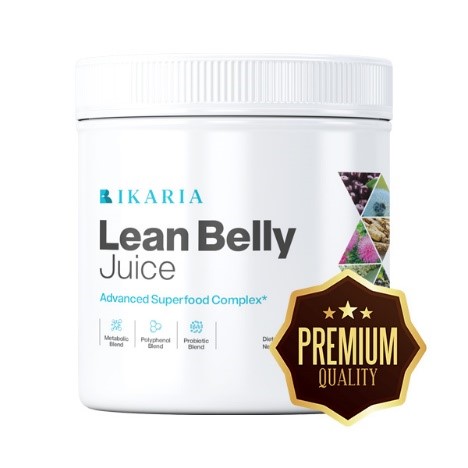Hot yoga has gained immense recognition within the West, providing a singular twist to conventional yoga practices by incorporating warmth and humidity. Hot yoga is now an umbrella time period for numerous kinds of yoga practiced in heated environments, every with its personal philosophy, construction, and advantages. By exploring these various kinds of scorching yoga, practitioners can discover a apply that most accurately fits their particular person wants, preferences, and fitness ranges. Whether looking for bodily problem, psychological readability, or a way of group, there’s a model for nearly everybody.
Disclosure: This submit might comprise affiliate hyperlinks. If a purchase order is made by means of these hyperlinks, we might earn a fee at no further price to you. Your sort help helps us create extra conscious articles!
1. Bikram / 26 & 2
Bikram Yoga is among the most well-known kinds of scorching yoga. This model was developed by Bikram Choudhury within the Nineteen Seventies and the primary Bikram studio was opened in Los Angeles. This very structured model of scorching yoga caught on with celebrities and fitness fans alike, largely resulting from its distinctive method and the rigorous bodily and psychological challenges it presents.
How scorching is a Bikram class? The room is heated to 105 levels Fahrenheit with a 40% humidity degree.
- Structure: This model consists of a particular sequence of 26 yoga poses and two respiratory exercises. Every asana is carried out twice. A Bikram class lasts for precisely 90 minutes.
- Pros: The set sequence of poses permits practitioners to trace their progress over time, as they grow to be extra conversant in the postures. Many practitioners recognize the self-discipline of a structured class, as it may possibly result in a deeper understanding of every posture.
- Considerations: Bikram Yoga will be significantly difficult due to its depth and warmth. The inflexible construction might not enchantment to everybody, significantly those that want extra variation of their apply. Bikram Choudhury has been accused of sexual misconduct, and there have been different authorized points surrounding him. This has led to many lecturers and yoga studios distancing themselves from the Bikram identify, even when they proceed to supply scorching courses. Many of those lecturers and studios use the category identify “26 & 2” as a substitute for signify the identical sequence of poses with out the affiliation with its founder.
2. Hot Vinyasa
Hot Vinyasa Yoga is a dynamic and flowing model that includes the rules of vinyasa, which implies “to place in a special way.” In this model, actions are synchronized with breath, making a seamless circulation from one posture to the following.
How scorching is a Hot Vinyasa class? The temperature usually ranges from 85 to 95 levels Fahrenheit, making it barely cooler than a Bikram class.
- Structure: Unlike Bikram, Hot Vinyasa courses don’t observe a hard and fast sequence of poses. Teachers have the liberty to create their very own sequences, typically incorporating quite a lot of poses and strategies. This permits for a extra artistic and spontaneous apply.
- Pros: The variability in school construction can maintain practitioners engaged and challenged. Hot Vinyasa can be recognized for its emphasis on breath and motion, which may improve bodily endurance and psychological focus.
- Considerations: The lack of a set sequence might make it tougher for rookies to trace their progress. Additionally, the spontaneity can typically result in courses which are much less predictable by way of depth and pacing.
3. CorePower
CorePower Yoga provides a contemporary twist on the standard scorching yoga apply, mixing parts of strength training with asana apply. Founded in 2002 by Trevor Tice, this model emphasizes not simply bodily fitness, but in addition mindfulness and group.
How scorching is a CorePower class? Classes vary from 93 to 105 levels Fahrenheit.
- Structure: CorePower Yoga provides 3 kinds of scorching and heat courses from introductory (degree 1) to superior (degree 3), with greater ranges usually practiced in heated rooms. The model contains fast-paced actions, respiratory exercises, and meditation parts.
- Pros: CorePower is among the largest chains of studios within the United States, making it accessible to many. The courses are well-structured and led by skilled instructors who present modifications for various talent ranges. Additionally, CorePower’s give attention to group fosters a supportive atmosphere, selling not solely particular person progress but in addition collective motivation amongst practitioners.
- Considerations: While the courses are designed for numerous fitness ranges, some might discover the depth of the workouts difficult, particularly if they’re new to the apply. Additionally, the company nature of the studio might not resonate with these looking for a extra conventional, serene yoga expertise.
4. Baron Baptiste Power Yoga
Baptiste Power Vinyasa Yoga combines parts from numerous practices to create a dynamic circulation class. This model, developed by Baron Baptiste, emphasizes empowerment by means of motion in a heated atmosphere. Classes give attention to synchronizing breath with motion, fostering a mind-body connection.
How scorching is a Baptiste Power yoga class? Studios are usually heated to between 94 and 98 levels Fahrenheit.
- Structure: Baptiste Yoga courses typically observe a vinyasa circulation format, which implies that postures are linked by means of breath and motion in a steady sequence. While there are specific foundational poses which are typically included, the sequence of yoga postures can differ from class to class, permitting for a extra spontaneous and artistic apply.
- Pros: One of the first advantages of Baptiste Yoga is its give attention to private transformation, each bodily and mentally. By encouraging practitioners to problem themselves and push their limits, it fosters a way of empowerment and self-discovery. The class construction additionally permits for higher variation, which may maintain the apply recent and interesting.
- Considerations: While the dynamic nature of Baptiste Yoga will be invigorating, it is probably not appropriate for everybody. Those preferring a slower-paced apply or who require extra time to carry every posture might discover this model difficult. Additionally, the emphasis on depth implies that rookies or these with sure bodily limitations ought to method this model with warning and will profit from beginning with gentler courses.
5. Moksha (Modo)
How scorching is a Moksha class? Studios keep a temperature between 100 and 103 levels Fahrenheit.
Moksha Yoga, also referred to as Modo Yoga in some areas, is a up to date model of scorching yoga that emphasizes a extra holistic method to apply. Founded in Canada in 2004 by a bunch of devoted yogis, Moksha combines conventional yoga rules with a give attention to eco-friendliness and group.
- Structure: Classes incorporate a mixture of hatha and vinyasa kinds, permitting for higher flexibility within the yoga sequence. Each session lasts about 60 to 90 minutes and might differ from teacher to teacher, offering a dynamic expertise.
- Pros: The courses are designed to be accessible to practitioners of all ranges, making it a terrific selection for rookies or these searching for a extra community-oriented ambiance. Additionally, the emphasis on sustainability and social duty resonates with many practitioners who worth eco-conscious practices.
- Considerations: The selection in school codecs implies that some courses can really feel fairly completely different from each other, which can require practitioners to be open-minded and adaptable. While the variability in school construction is a profit for some, those that thrive on repetition and consistency might discover it much less interesting.
6. Forrest Yoga
Forrest Yoga, created by Ana T. Forrest, is a singular model of scorching yoga that emphasizes deep respiratory, core strength, and emotional therapeutic. Named after its founder, this model is designed to assist practitioners join deeply with their our bodies and minds.
How scorching is a Forrest class? The room is usually heated to round 85 levels Fahrenheit, making it barely cooler than different types of scorching yoga.
- Structure: Forrest Yoga courses give attention to a sequence of standing poses, core work, and deep respiratory exercises. Each session lasts about 90 minutes and contains poses held for longer intervals to deepen the stretch and strengthen the muscular tissues.
- Pros: The emphasis on core strength and deep respiratory can result in improved posture, higher body consciousness, and emotional launch. The slower tempo and give attention to alignment make it accessible to practitioners of all ranges.
- Considerations: Forrest Yoga’s introspective nature could also be difficult for many who want a extra fast-paced or bodily intense apply. Additionally, the distinctive poses and longer holds might require endurance and persistence to grasp.
7. The Barkan Method
Developed by Jimmy Barkan, The Barkan Method is a spinoff of Bikram Yoga that includes extra selection and creativity into the apply. It combines parts of hatha and vinyasa yoga with conventional scorching yoga rules.
How scorching is a Barkan Method class? Classes are usually held in rooms heated to between 100 and 105 levels Fahrenheit.
- Structure: The Barkan Method features a set sequence of postures much like Bikram Yoga however permits for variations and extra poses. Classes final between 60 to 90 minutes and will embody each standing and flooring postures.
- Pros: The flexibility within the yoga sequence permits practitioners to expertise a wider vary of poses, which may improve general flexibility and strength. The methodology additionally encourages a extra artistic and adaptable method to heated yoga.
- Considerations: While the added selection will be refreshing, it could even be overwhelming for rookies who’re nonetheless studying fundamental postures. The depth of the warmth mixed with the dynamic circulation might also be difficult for some practitioners.
8. Tribalance Hot Yoga
Tribalance Hot Yoga is a singular fusion of assorted yoga kinds designed to create a balanced and holistic apply. Developed by Jim and Bobbi Pasquinelli, this methodology emphasizes stability in body, thoughts, and spirit.
How scorching is a Tribalance Hot Yoga class? The room is usually heated to round 105 levels Fahrenheit.
- Structure: Tribalance courses mix parts of Bikram, vinyasa, and yin yoga, creating a various and well-rounded apply. Each class lasts about 90 minutes and contains a mixture of standing, seated, and flooring poses.
- Pros: The mixture of various kinds permits practitioners to expertise the advantages of assorted practices in a single session. This holistic method can enhance flexibility, strength, rest, and psychological readability.
- Considerations: The selection in kinds might require practitioners to be adaptable and open to completely different strategies. Those preferring a extra constant or conventional method to yoga might discover this fusion model much less interesting.
9. Warm Yin
Warm Yin Yoga is a mild and meditative model of yoga practiced in a mildly heated room. This model focuses on long-held passive stretches that focus on the connective tissues, selling rest and suppleness.
How scorching is a Warm Yin class? The temperature usually ranges from 75 to 85 levels Fahrenheit, making it cooler than most scorching yoga kinds.
- Structure: Warm Yin courses contain holding seated or reclined poses for prolonged intervals (normally 3 to five minutes). This slow-paced apply focuses on deep stretches and conscious respiratory. The slower tempo permits for a meditative expertise, encouraging mindfulness and introspection. This model typically incorporates props, like bolsters and blankets, to help the body in every pose.
- Pros: The mild warmth helps muscular tissues chill out with out inflicting extreme sweating, making it appropriate for all ranges. The slower tempo and emphasis on stillness make it accessible for practitioners of all ranges, together with rookies.
- Considerations: The gradual tempo and lengthy holds could also be difficult for many who want extra dynamic or bodily intense practices. Additionally, practitioners should be conscious of their limits to keep away from overstretching.
10. Hot Power
Hot Power Yoga is an intense type of scorching yoga that focuses on building strength, endurance, and suppleness by means of a vigorous apply. It emphasizes highly effective and flowing actions, much like conventional Power Yoga, however carried out in a heated atmosphere.
How scorching is a Hot Power Yoga class? The temperature normally ranges from 90 to 100 levels Fahrenheit.
- Structure: Hot Power Yoga courses are sometimes fast-paced and contain a steady circulation of postures. The sequences can differ from class to class, permitting instructors to include a variety of poses and modifications. Classes usually final between 60 to 75 minutes.
- Pros: The variability of Hot Power Yoga permits college students to expertise a wider vary of postures and kinds, retaining the apply recent and interesting. The give attention to strength and endurance can result in important fitness enhancements, and lots of practitioners benefit from the empowering, energetic ambiance of those courses.
- Considerations: The depth and tempo of Hot Power Yoga could also be overwhelming for rookies or these new to yoga. Additionally, the various class codecs could make it troublesome to trace progress over time, as every teacher might have a distinct method.
11. Hot Hatha
Hot Hatha Yoga is a method of scorching yoga that focuses on the standard rules of Hatha yoga, which emphasizes posture (asana) and breath management (pranayama). This apply is designed to create stability within the body and thoughts by means of deliberate and conscious actions.
How scorching is a Hot Hatha Yoga class? The room is usually heated to round 95 to 100 levels Fahrenheit.
- Structure: Hot Hatha Yoga courses typically observe a slower tempo in comparison with different scorching yoga kinds, with a give attention to holding postures for longer intervals to deepen stretches and enhance alignment. Classes normally final between 60 to 90 minutes.
- Pros: The slower tempo and emphasis on alignment make Hot Hatha Yoga accessible to practitioners of all ranges, together with rookies. The slower tempo may also help practitioners develop strength and suppleness with out the depth of a extra demanding class.
- Considerations: While the deliberate tempo will be useful for rookies and people searching for a extra conscious apply, it could not present the identical cardiovascular exercise as extra dynamic kinds.


















Discussion about this post